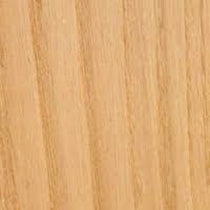
Chestnut
Chestnut, in the UK context, typically refers to Sweet Chestnut (Castanea sativa), a deciduous hardwood tree native to Southern Europe, North Africa, and Western Asia, but widely naturalised across the UK since its introduction by the Romans. It thrives in well-drained, slightly acidic soils, often in mixed woodlands, and grows to 50–100 feet tall with trunk diameters of 3–5 feet, sometimes living for centuries and developing deeply fissured bark.
The heartwood of Sweet Chestnut is a light to medium golden-brown, often resembling oak in tone, but it darkens to a richer, warmer brown with age and exposure to light. The sapwood is a pale cream or yellowish-white, distinctly separate. The grain is straight to slightly interlocked, with a coarse texture similar to oak due to its ring-porous structure, and it has a moderate natural lustre. The wood may feature small knots or subtle figuring, adding character, though it’s generally less pronounced than in oak.
Sweet Chestnut has a density of around 550–650 kg/m³, making it moderately hard and strong, with good stability once seasoned. It’s durable, offering decent natural resistance to decay—comparable to oak—due to its high tannin content, but it’s not particularly resistant to insects like wood-boring beetles. The wood splits cleanly, a trait historically exploited for fencing, shingles, and stakes, and it works well with both hand and machine tools. Its coarse grain can cause tearout if tools aren’t sharp, but it glues, stains, and finishes effectively, often taking on a warm, golden hue with oil-based finishes.
When worked, Sweet Chestnut has a mild, sweet aroma, sometimes with a nutty undertone, which fades after finishing. In the UK, it’s traditionally used for furniture, flooring, panelling, and beams, as well as cooperage for wine or whisky barrels, where its tannins can subtly influence flavour. It’s also a favourite for outdoor applications like garden furniture or pergolas, though prolonged exposure to damp conditions may require treatment.
Sweet Chestnut is moderately priced, often slightly cheaper than oak, but its availability in the UK has been impacted by chestnut blight (Cryphonectria parasitica) and ink disease (Phytophthora species), which have reduced mature stands. It’s still widely available, often sourced from coppiced woodlands, a sustainable practice in British forestry. Its similarity to oak, combined with its durability and warm tone, makes it a versatile choice for both structural and decorative projects.
